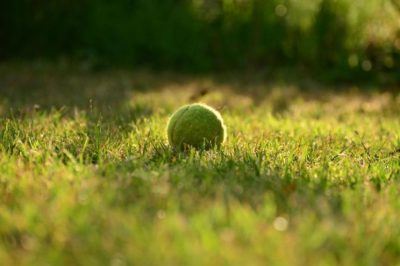Why are many elite tennis players turning to Pilates as an exercise regime alongside their tennis training? Pilates can be a great way to reduce the risk of injuries and improve movement biomechanics leading to better performance. Let us consider each of these benefits in detail and then look at some key exercise to get you started.
Reduce the risk of injuries
Tennis requires strength, power, endurance and speed but also mobility, flexibility, control and balance are equally important. The demands of tennis can place participants at risk of injury – whether playing at professional or recreational level. Many injuries that occur in tennis are common to other sports, while others have a distinct profile due to the nature of the sport. In tennis most acute injuries occur in the lower extremities such as knees and ankles, whereas most overuse injuries are located in the upper extremities; elbows, wrists and shoulders.
The joints take a battering with tennis especially with harder surfaces such as tarmac or all-weather courts – knees, ankles and hips are especially at risk. Tennis is a lifelong sport and looking after the integrity of the joints is key in postponing osteoarthritis. Pilates classes are low impact, ideal for minimal wear or tear on the joints while many Pilates exercises strengthen the deep stabilising muscles providing support around the joints. Some examples are the gluteal muscles supporting the hips and the rotator cuff muscles stabilising the shoulders.
Injuries often occur due to an overdominance in one particular area. Pilates helps balance this out by rectifying muscle imbalances, improving flexibility and building deep stabilising muscles. The spine in tennis requires repetitive rotations and extension with one-sided movements, meaning tennis players often have posture-based imbalances. Pilates assists in releasing tight areas improving overall mobility while strengthening key stabilising muscles upon which power can be developed.
Improve your game
Technical, tactical, mental and physical skills are all equally important for performance in tennis with the added challenges of unpredictable time on court, the environment and the opponent. Agility to respond to these demands can be enhanced via greater mobility, balance and stability and Pilates is perfect for addressing these. In a single stroke a tennis player may move close to 3 meters requiring great flexibility, while through the game he or she may complete between 300-500 explosive efforts emphasising the importance of strong and supple muscles.
Returning the ball from an imperfect position requires agility, being able to maintain dynamic balance while often stretching to near maximum. Pilates helps develop strong core muscles to assist in dynamic balance and increases flexibility through the hips and spine helping a player reach shots with ease.
Furthermore, Pilates incorporates breath control and concentration into all exercises enhancing mental skills which are paramount in winning a tennis game.
‘Tennis is a mental game. Everyone is fit, everyone hits great forehands and backhands’
-Novak Djokovic
Key exercises using small Pilates equipment
1. Arm Opening
Benefit: improves thoracic spine (upper back) rotation supporting powerful serves and strokes and preventing overuse of the shoulders. This exercises also stretches the chest muscles improving posture, breath capacity and shoulder alignment. The foam roller under the top leg ensures the hips are in a fixed position focusing the exercise on the spinal rotation.

2. Shoulder Bridge
Benefit: improves spinal mobility alongside lower extremity muscular strength focusing on quadriceps, hamstring and gluteal muscles which creating power for explosive movement. The Pilates ring on the outside of the thigh will increase the gluteus medius muscle engagement – a key muscle of stability and joint health for the knees, hips and lower back.

3. Lunge
Benefit: improves the whole lower limb, opening the hips while strengthening the legs. The balance cushion offers additional challenge for balance and enhances recruitment of the stabilising muscles of the legs and trunk.

4. Leg Pull
Benefit: improves the strength of the deep stabilising trunk muscles which provide a stable axis for rotation. It also strengthens the rotator cuff and the serratus anterior muscles responsible for shoulder stability while strengthening the wrist and elbow.
The ova ball can help recruit the adductor muscles on the inside of the thighs which help in sharp changes of direction during explosive movements on court.

Give these exercises a try or join a class and see for yourself the benefits Pilates can bring to your tennis game – the ball is in your court!
This blog is written by Sophia Ayranova. Please check the schedule at APPI Wimbledon if you would like to join a Pilates class. All levels are welcome.
https://bjsm.bmj.com/content/46/7/492.long
https://www.ncbi.nlm.nih.gov/pmc/articles/PMC5125509/

